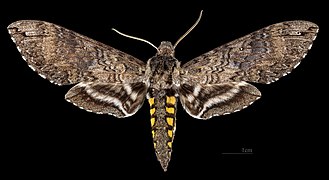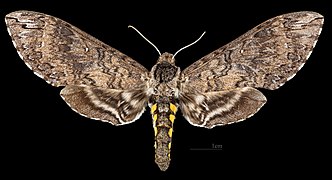
Cocytius lucifer is a moth of the family Sphingidae first described by Walter Rothschild and Karl Jordan in 1903.

Manduca occulta, the occult sphinx, is a moth of the family Sphingidae.
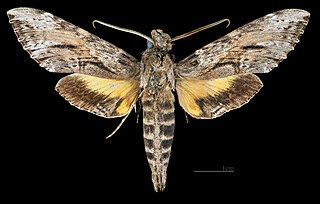
Isognathus rimosa, the rimosus sphinx, is a moth of the family Sphingidae. The species was first described by Augustus Radcliffe Grote in 1865.

Adhemarius gannascus is a moth of the family Sphingidae first described by Caspar Stoll in 1790.

Manduca andicola is a moth of the family Sphingidae first described by Walter Rothschild and Karl Jordan in 1916. It is found from Central America to Peru, Ecuador, Bolivia and Argentina.
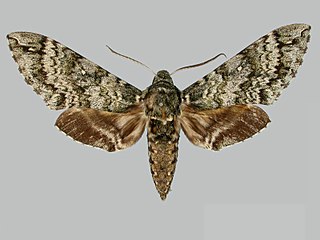
Manduca armatipes is a moth of the family Sphingidae first described by Walter Rothschild and Karl Jordan in 1916. It is found from Argentina and Uruguay to Bolivia.

Manduca bergi is a moth of the family Sphingidae first described by Walter Rothschild and Karl Jordan in 1903.

Manduca clarki is a moth of the family Sphingidae first described by Walter Rothschild and Karl Jordan in 1916. It is known from Brazil, Colombia, Ecuador, Peru and Bolivia.
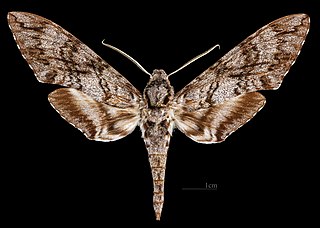
Manduca corumbensis is a moth of the family Sphingidae.

Manduca dalica is a moth of the family Sphingidae.

Xylophanes nabuchodonosor is a moth of the family Sphingidae.

Enyo cavifer is a species of moth in the family Sphingidae. It was described by Rothschild and Jordan, in 1903.

Erinnyis impunctata is a species of moth in the family Sphingidae.
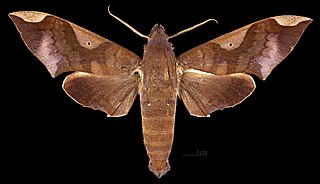
Pachylia syces is a moth of the family Sphingidae.
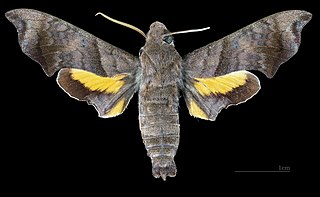
Perigonia pallida is a moth of the family Sphingidae first described by Walter Rothschild and Karl Jordan in 1903.

Manduca manducoides is a moth of the family Sphingidae.
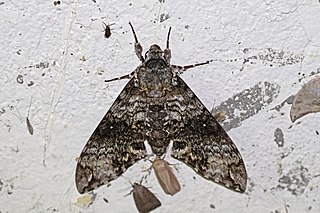
Manduca schausi is a moth of the family Sphingidae. It is found from Mexico, Guatemala, Nicaragua and Costa Rica to Brazil, Argentina and Bolivia.

Manduca tucumana is a moth of the family Sphingidae.

Manduca scutata is a moth of the family Sphingidae.
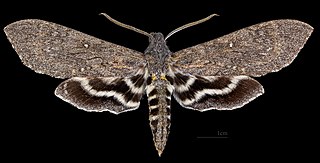
Lintneria maura is a moth of the family Sphingidae.






